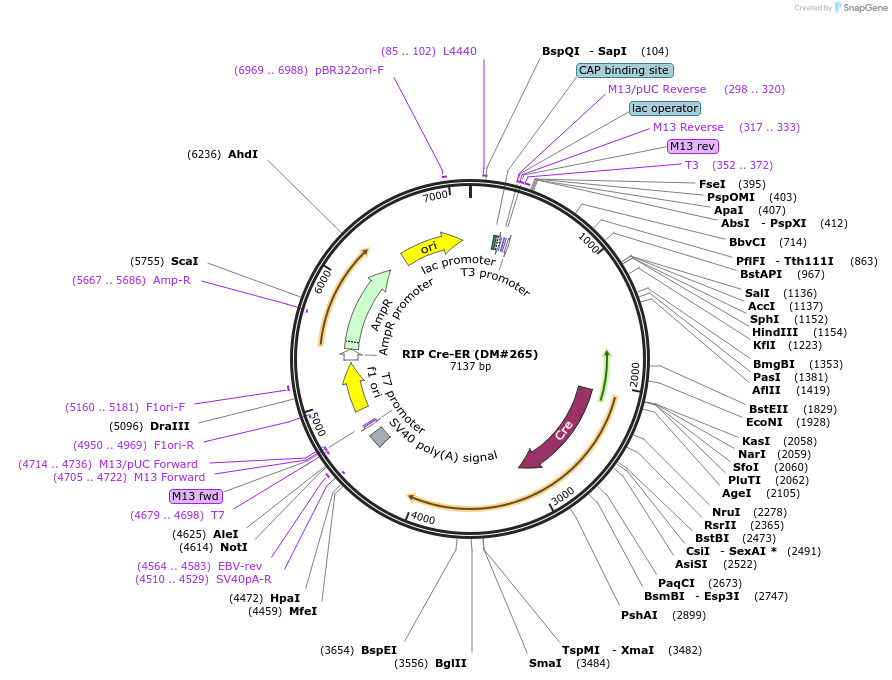-
Depositing Lab
-
Publication
-
Sequence Information
Ordering
| Item | Catalog # | Description | Quantity | Price (USD) | |
|---|---|---|---|---|---|
| Plasmid | 15029 | Standard format: Plasmid sent in bacteria as agar stab | 1 | $85 | |
Backbone
-
Vector backbonemodified pBluescript II KS
- Backbone size w/o insert (bp) 6700
-
Vector typeMammalian Expression, Cre/Lox ; for making transgenic constructs
Growth in Bacteria
-
Bacterial Resistance(s)Ampicillin, 100 μg/mL
-
Growth Temperature37°C
-
Growth Strain(s)Stbl3
-
Copy numberHigh Copy
Gene/Insert
-
Gene/Insert nameRat insulin promoter (RIP)
-
Alt nameinsulin promoter
-
Alt nameins2
-
SpeciesR. norvegicus (rat)
-
Insert Size (bp)700
-
Entrez GeneIns2 (a.k.a. CP-II)
-
Tag
/ Fusion Protein
- Cre-ER (TM) (C terminal on backbone)
Cloning Information
- Cloning method Restriction Enzyme
- 5′ sequencing primer T3 (Common Sequencing Primers)
Resource Information
-
A portion of this plasmid was derived from a plasmid made byCre-ER(TM) was a gift from Andy McMahon.
-
Articles Citing this Plasmid
Terms and Licenses
-
Academic/Nonprofit Terms
-
Industry Terms
- Not Available to Industry
Trademarks:
- Zeocin® is an InvivoGen trademark.
Depositor Comments
The CRE-ER(TM) protein requires tamoxifen (TM) to catalyze LoxP site-mediated excision.
The RIP–CreER construct was generated by fusing a 0.66-kilobase SmaI–HindIII fragment of the RIP2 promoter to a minimal hsp68 promoter, and placing the chimaeric promoter upstream of CreER(TM).
See Author's Map for more information.
These plasmids were created by your colleagues. Please acknowledge the Principal Investigator, cite the article in which the plasmids were described, and include Addgene in the Materials and Methods of your future publications.
-
For your Materials & Methods section:
RIP Cre-ER (DM#265) was a gift from Douglas Melton (Addgene plasmid # 15029 ; http://n2t.net/addgene:15029 ; RRID:Addgene_15029) -
For your References section:
Adult pancreatic beta-cells are formed by self-duplication rather than stem-cell differentiation. Dor Y, Brown J, Martinez OI, Melton DA. Nature. 2004 May 6. 429(6987):41-6. 10.1038/nature02520 PubMed 15129273





